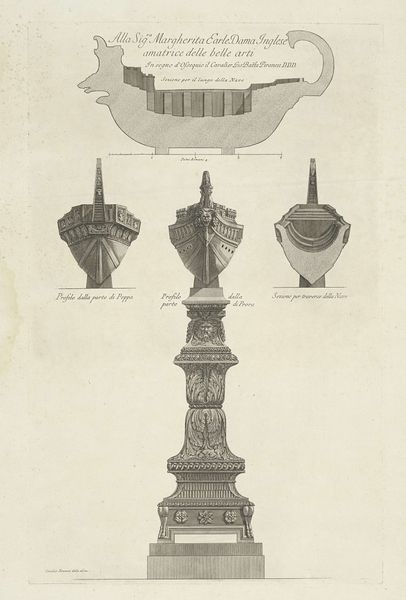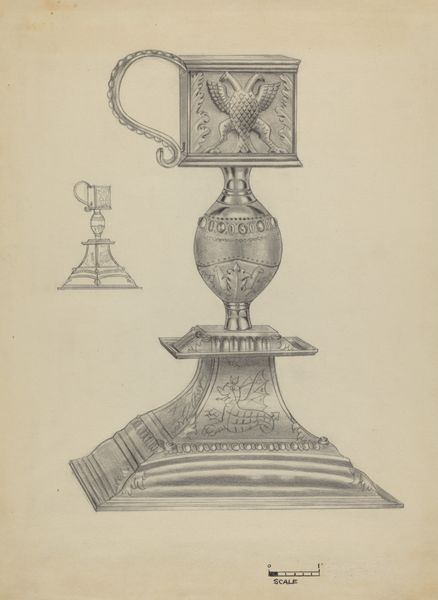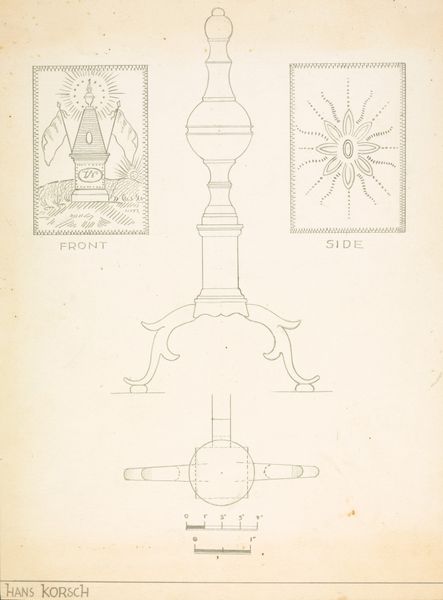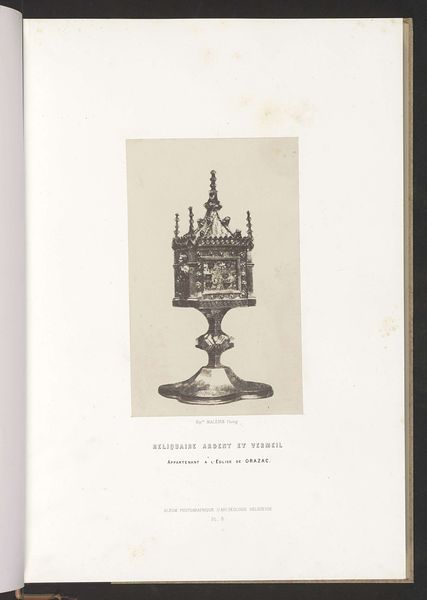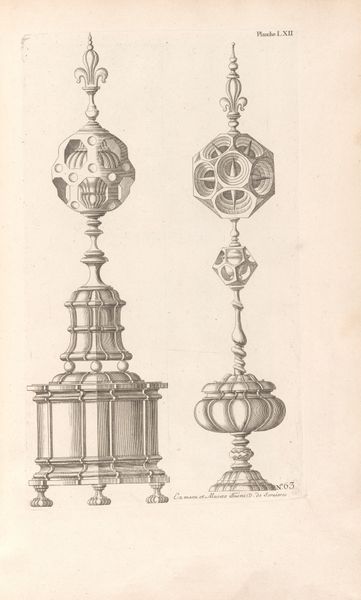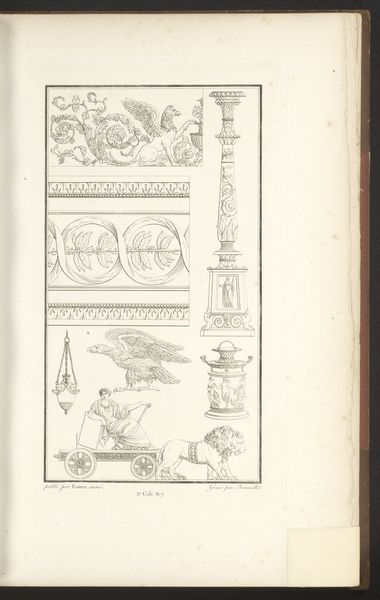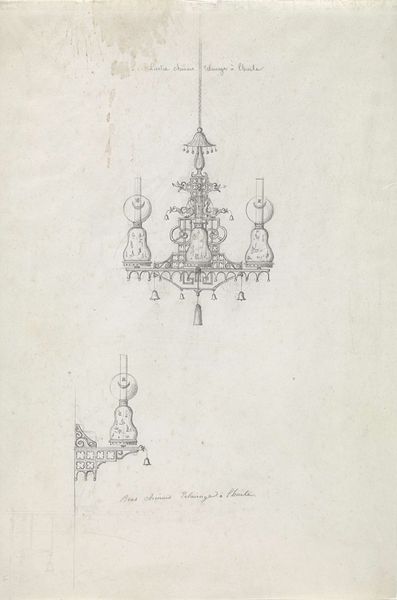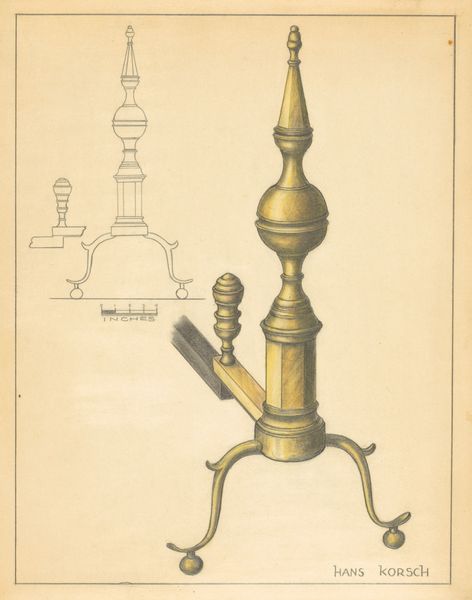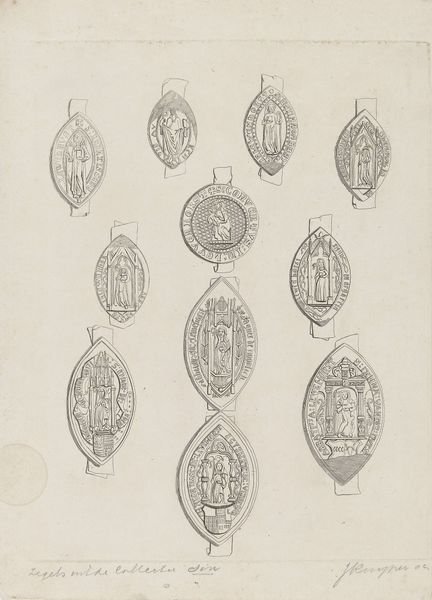
print, metal, engraving
#
neoclacissism
# print
#
metal
#
old engraving style
#
engraving
Dimensions: height 212 mm, width 159 mm
Copyright: Rijks Museum: Open Domain
Curator: Immediately, I am struck by this strange yet captivating composition. It evokes a feeling of restrained joy, as if the bells themselves are holding back a grand chime. Editor: Yes, that's interesting. Let me offer some context. Here we have a print entitled "Tafelklokken, plaat XVII," or "Table Bells, plate XVII," by Charles Onghena, dating roughly from 1827 to 1829. Curator: Onghena... Right. It's quite reminiscent of the Neoclassical style with all those symbolic medallions and friezes, isn't it? The detail in the engraving is phenomenal; you can almost feel the cold, smooth metal of the bells. But, in a weird twist, something seems so artificial about the scene... Editor: Undoubtedly, it plays into Neoclassicism's penchant for controlled elegance, doesn't it? I find it intriguing how Onghena employs symbolism within each piece; those images tell silent narratives, recalling histories and meanings now mostly forgotten. Do they speak to specific cultural narratives? Curator: The visual language definitely nods to ancient Roman and Greek symbols, reflecting themes of power, authority, or civic virtues that resonate even now. As such, this image embodies the cultural memory carried in form, the echo of an era reaching across the ages. They were definitely concerned with posterity! It’s kind of haunting how removed they now are… Editor: Agreed. Their symbolic value underscores our continuous engagement with concepts like civic duty. The Neoclassical ideal proposed that through recalling antique models and traditions, humanity could better grasp their present conditions. But what did people make of bells back then? I suppose there was not yet such thing as telephone… I’d expect people relied heavily on this mode of communication for town life. Curator: Consider these bells not merely functional items but vehicles through which important proclamations, be they celebrations, warnings, or mournful dirges, came. Symbolically, then, this image connects not just Neoclassicism with ancient civilisations, but connects past human life with modern audiences by hinting at enduring cultural structures such as town communication styles that persist today. Editor: So here it is: looking closely, what felt strangely detached about those images actually opens the door to explore larger structures in townlife— communication and governance as rooted back into classical periods Curator: Right! What I once mistook as sterile Neoclassicism reveals the warm pulse of civic and historical significance resonating between cultures throughout time. Editor: Beautifully put!
Comments
No comments
Be the first to comment and join the conversation on the ultimate creative platform.
